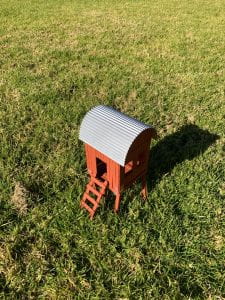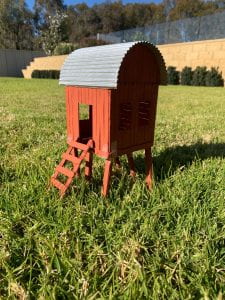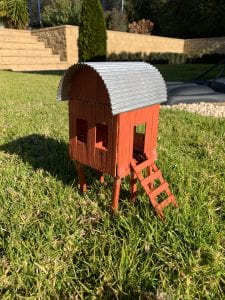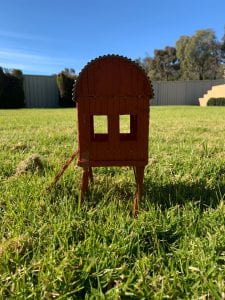Cape York and its needs
The Cape York Peninsula? what and where?... The Cape York Peninsula is a region situated in Far North Queensland, Australia covering roughly 130,000 kilometres. It has a population of roughly 22,000 people, of which around half are Indigenous or Torres Strait Islander.
The location is known for its natural beauty, remoteness, climate and for having some of Australia's best 4WD routes. The region is mostly covered by relatively flat Savanna, whilst dense rainforests cover the national parks and the coastlines. About half the land however, is used for grazing cattle.

The climate in the peninsula is typical of tropical regions with hot and wet summers and high humidity. The tropical climate coupled with the relative proximity to the ocean (being a peninsula), the Cape is very prone to natural disasters like flash flooding and cyclones in the harsh wet seasons.
The unpredictable weather in Cape York causes devastation to its occupants. Both humans in terms of loss of infrastructure and damages, and native animals (many endangered) losing their habitats.
These persistant issues are a major reason why we chose to make our design what it was. Because we as engineers cannot control the weather, we must do our best to limit its innevitable effects...
Progress through the Human Centred Design Process
The Engineers Without Borders challenge encourages students to undertake a "Human Centred Design Process". This means that our team had to first discover and empathise with the community we would be interacting with. This was done through learning about the Cultural, Social, Environmental, Economic and ethical situation of Cape York and its population. After completing our discovery, we then needed to attempt to understand the communities needs through empathising. Both phases helped our team greatly in our next stages by allowing us to have a better understanding and context when entering the ideation and screening phases.
Above: the stages of the Human Centred Design Process
The ideation and screening phases consisted of using our knowlege gained during the discovery and empathise section to come up with a viable solution to an issue(s) that needs addressing in Cape York. Beginning with ideation, we came up with twenty-one rough design concept ideas based upon a rough foundation of the previous design phases. These concept solutions were then to be simplified into five of the best designs which were to then undergo the screening process.
Above: All 21 ideas from our ideation phase
Beginning the screening phase involved choosing the five concept design solutions with the highest potential for achieving an ideal score in our decision matrix. The decision matrix (as seen below) is a method of choosing a superior concept design by allocating a "score" to different ideas based upon a strict criteria. To add further variables to this matrix, weightings have been placed on each of the criteria based upon their percieved importance. Using this system, we were able to isolate the best concept design according to the criteria. The best scoring concept design then becomes a much more obvious choice of a potential final design solution. The Elevated Flat-Pack was the best scoring of all candidates and our team also believed it to be the superior design. We then proceeded to further detail our design after the completeion of our concept design report.
Above: the decision matrix our team used to assist in selecting our design (lower score means better)
The concept design report had been completed, listing all the rational behind our choice of the Elevated Flat-Pack. This concluded our ideation and screening phases.
Above: Our initial concept sketch of the Elevated Flat-Pack from the concept design report (very basic)
After ideation and screening, the last two phases remain; prototyping and Communicating. This cummulates in our completed final design solution, which is presented in our live Zoom exhibition!
Final Design Solution
The Elevated Flat-Pack had passed the strict screening phase and is now ready to be elaborated on in order to lead to our final design solution. After elaborating on factors such as: why we chose the design, what its main features were, materials used, assembly, transportation, the impact of the design and a very basic structural analysis, we were starting to turn our Elevated Flat-Pack from concept to detailed solution. Our first presentation of our final design solution was shown in front of the cohort (from whom we would receive feedback) and the engineering professors.
Above: a few slides from our initial final design solution presentation
After our team had presented our non-finalised design solution in front of the cohort, we were given to be allocated constructive feedback from another team. The purpose of this was to enable us to further improve and justify our design solution by adding previously lacking information or reiterating our design. Some of these issues raised that were later addressed included: Our fulfilment of community needs were not fully addressed, much of the design process was missing, phase design was only mentioned, a better visual idea of scale was needed, no previous iterations were mentioned and little reference was given to what the interior space would be used for. Most of these comments were taken into considerations and the following changes were made, which can now be seen in our final slides...
Above: Slide 3 and 18 now include much more detail in regards to community needs
Above: Slide 2 and 4 now include a description of our design process and also mentions previous iterations
Above: Slide 13 is entirely dedicated to overviewing phase design
Above: Slide 12 depicts scale through comparison to an average human standing beside the shelter
Above: Slide 9 demonstrates that the Elevated Flat-Pack is simply a shelter for sleeping, as seen in the floorplan
As you can see we had addressed much of the feedback recieved from our initial presentation and used it to a full extent. With this constructive criticism, we had now a much more complete presentation to showcase. This was not addressed in our feedback, but our team believed that a physical prototype was needed to complement our current designs. Therefore, in order to have a greater understanding of how a prototype would look in practice rather than drawn on a computer program, a basic, low-fidelity Elevated Flat-Pack was constructed. This small model was a not-to-scale proof of concept that assisted in adding another visual element to our design. We now had two 2D plans, a 3D AutoCAD design and a physical model.
Above: Our rudimentary prototype constructed of paddlepop sticks, cardboard and fine craftsmanship 😉
Finally, through research and constructive criticsm, we had enough information to complete our final design solution. This final iteration is the one that is to be presented in our EngFest presentation.
What’s next?
After EngFest, all teams are to submit a final report. This is to be the last and most detailed of all the entire challenge. The top design solutions from all participating Universities then have a chance of being shown at an Engineering Expo in Melbourne. If there was any significant merit to our design, it would need to be approved by a multitude of groups, such as local councils, traditional custodians, national parks and construction regulation organisations. If approval was successful, manufacturing would need to be sorted. Labour, transport, licencing, machinery, assembly, etc. would all need to be accounted for. Finally, the entire cost and structural analysis would need to be completed and marked off by multiple engineers and builders. Then, addequate prototyping can commence. If all is successfull, the Elevated Flat-Pack could be a very achievable design solution, potentially helping increase tourism in the Cape York Peninsula...
In case you missed it…
The following links below will direct you to any material you may have missed during our live presentation:
This link will direct you to a PDF copy of our presentation slides…
This link will direct you to a transcript of our speech…
*Entire recording exceeded 10Mb limit and therefore could not be posted 🙁






























